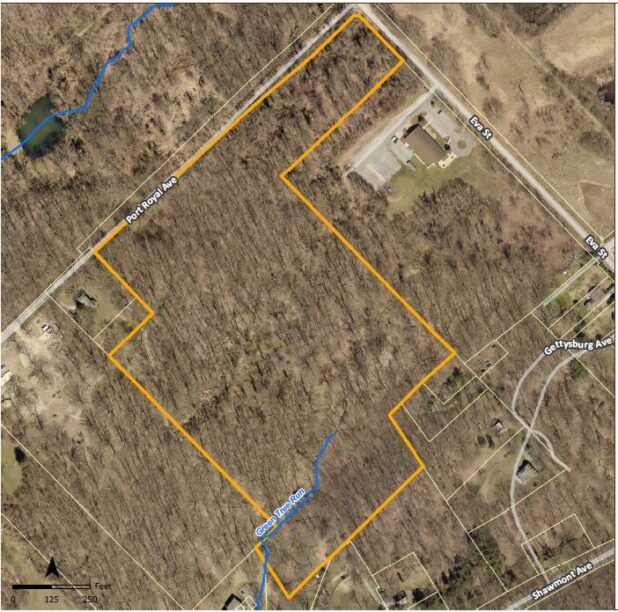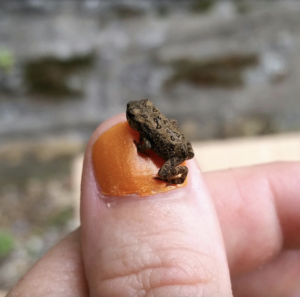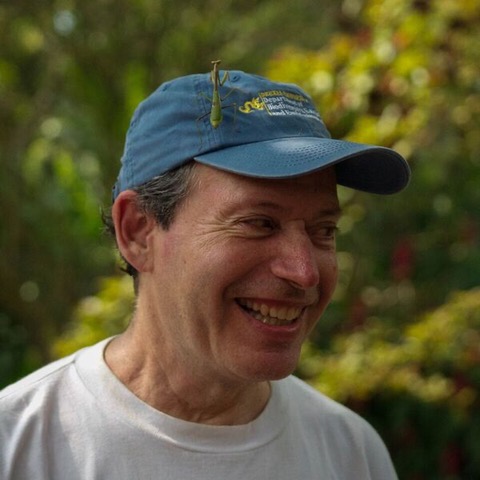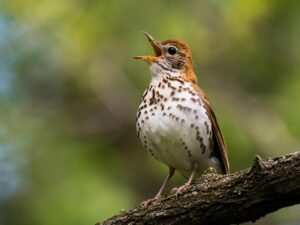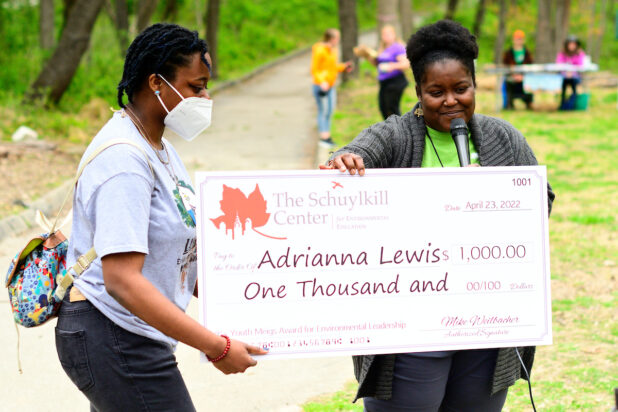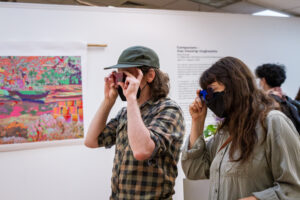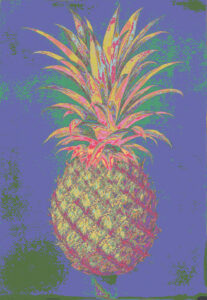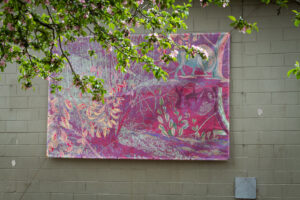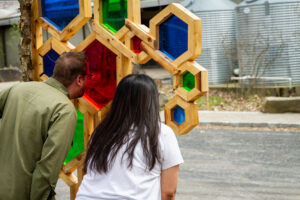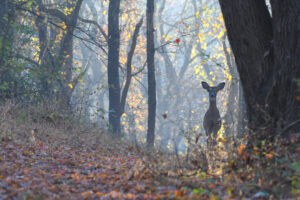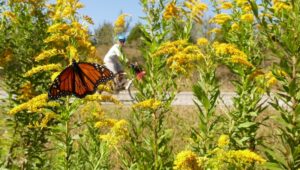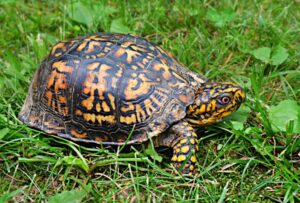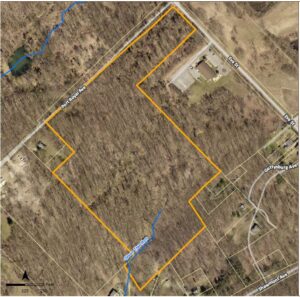
An aerial photo of the Boy Scout Tract, showing the Higher Ground church on Eva Street on the right and a 19th-century home on the left. Green Tree Run flows across the bottom of the photo.
August 30, 2022
We announced two months ago that we were exploring the potential sale of 24 acres of land to fund a number of transformational, once-in-a-generation initiatives among them: investing in our staff who bring the Center and the land to life, education programs, and aging infrastructure including our wildlife clinic, the only rehabilitation facility in the City. Unfortunately, this announcement has upset many of our neighbors and civic partners. I’m hoping that a more thorough explanation may address their concerns.
Most importantly, we have made no decision to sell; our Board of Trustees is simply exploring all of its options, and has released a Request for Proposals (RFP) packed with conservation requirements. The deadline to receive a proposal is late September, and any decision, even to sell the land at all, is many months away, and if the board does not receive a satisfactory proposal, we will not sell.
As part of this process, we are simultaneously exploring the interest of potential donors, grantors, and community leaders to preserve the entire tract. Though the work is still unfolding and the outcome is uncertain, we hope to have an update in the near future to share with our members and the community. This possibility is our organization’s priority at the moment, without question, and if this succeeds, we sidestep the proposal process completely.
Lost in the discussion is the fact that the Schuylkill Center has already permanently protected 420 acres of open space in Roxborough, more than any other entity. Our 340-acre campus in Upper Roxborough, comprising forests, fields, streams, and ponds, is under a permanent protective covenant, the largest privately protected open space in the City of Philadelphia. Back in the 1980s, we sold an additional 80+ acres to the city to be merged into Fairmount Park, also permanently protected. And if we sell the Boy Scout Tract, at least 12 of its 24 acres (and maybe more) will be protected too, resulting in 432 acres of protected land.
Turning to the RFP, we built numerous conservation safeguards into the document, like a conservation easement permanently protecting the steep slopes and floodplain. The easement is a legal agreement that permanently limits uses of the land in order to protect its conservation values; this will likely be a unique easement in that it requires a wooded corridor for the safe passage of migrating toads. We also ask that the floodplain, stormwater, and steep slopes measures exceed the city’s requirements, and that any development fit into the character of the neighborhood.
All of our trustees share a commitment for our twin mission of environmental stewardship and education. If we sell, we are seeking to leverage this possibility into an investment in our organization and its staff, in alignment with our strategic and master planning.
We continue to welcome your thoughts and engage in open dialogue. Please send your comments to us at boyscouttract@schuylkillcenter.org. The Center’s staff is collecting all input and sharing this information with the Center’s leadership and Board.
June 13, 2022
At a joint meeting last week of two civic associations, the Upper Roxborough Civic Association and the Residents of the Shawmont Valley, the group discussed the Boy Scout Tract, a 24-acre parcel of land at the corner of Port Royal Avenue and Eva Street. The Tract has been owned by the Center for more than 40 years, and while the tract was on the meeting’s agenda, the Center was not present, but instead will present to a second joint meeting of the two civics later in the month.
As the director of the Schuylkill Center, allow me to explain the unfolding situation.
Founded in 1965, the Center, with headquarters nearby off Hagy’s Mill Road, runs educational programming on a 340-acre forested campus across Port Royal Avenue from the Boy Scout Tract. We also operate the Wildlife Clinic, the City’s only wildlife rehabilitation center, located down Port Royal Avenue from the Tract. Our main campus is protected by a perpetual 2010 conservation easement held by Natural Lands, the largest such easement held by the organization within city limits.
While the 340 acres was donated to us by two families committed to environmental education, the Boy Scout Tract was given to us by one of those families to use as we needed, and was deliberately omitted from the conservation easement. Given its distance from the Visitor Center, we have been unable to find any programmatic use for the site in all these decades, and have almost no capacity to manage or maintain the site.
However, wanting of course to find a conservation outcome, we worked with Natural Lands in 2014 and again in ’15 to apply for state funding to permanently protect this site too– but were declined both times. The state told Natural Lands then that because our 340 acres of open space exists nearby, it was not a cost-effective use of their funds to preserve this parcel too. Sadly, we were forced to move on from this possibility.
Then, more than a year ago, we were approached by an individual to purchase the property for building 1-2 private homes. Knowing the sensitivity of any proposal for this parcel at this moment in Roxborough history, when the community is deeply worried about open space protection, we formed a task force of our nonprofit’s trustees, who have been carefully and cautiously moving forward.
Realizing the organization could not accept the first and only proposal for this important property, we began crafting a Request for Proposals, again engaging Natural Lands, the region’s most important natural areas organization, to help us assess the parcel. As many Shawmont Valley residents know, the Boy Scout Tract includes the headwaters of the Green Tree Run, one of the city’s few unimpeded streams, which arises on the tract, flows downhill past the backyards of Shawmont Avenue residents, and pours into the Schuylkill River below. The forested site is also steep, Green Tree Run carving out a surprisingly deep valley for such a small stream.
The RFP has not yet been released, an action the Center plans to take after these public meetings.
Please know the Center is seeking proposals for limited development that can be done without variances or special exceptions. We also seek to protect the site’s steep slopes and Green Tree Run through a perpetual conservation easement– future owners cannot apply for a variance to develop that portion of the site. Furthermore, any proposal must address the neighborhood’s long-standing request for precluding sewer and water from coming down Port Royal Avenue. The proposal will also address neighborhood stormwater concerns, as there are currently no stormwater controls on streets in the area. And the toads that famously march across Eva Street to the Reservoir every spring will be protected by a permanent forested corridor between the site and the reservoir, written into the easement. Finally, the proposal will address how it protects the character of the neighborhood, located as it is in a National Register historic district.
“This is an exploratory process,” notes Christopher McGill, president of the nonprofit’s board, a businessman who was raised in Roxborough and has deep roots in the community. “No decisions have been made, and the RFP has not been released. Given our mission of protecting and interpreting the natural environment, the Center is committed to a conservation-minded outcome for any proposal we accept.” And any decision the Center makes must be approved by a supermajority of the center’s 23 trustees, most of whom either live in or near Roxborough or work in the environmental arena, and all of whom are committed to the Center’s mission.
If you have any questions or concerns, email us at boyscouttract@schuylkillcenter.org. And we’ll return to this important topic as the story develops.
By Mike Weilbacher, Executive Director

